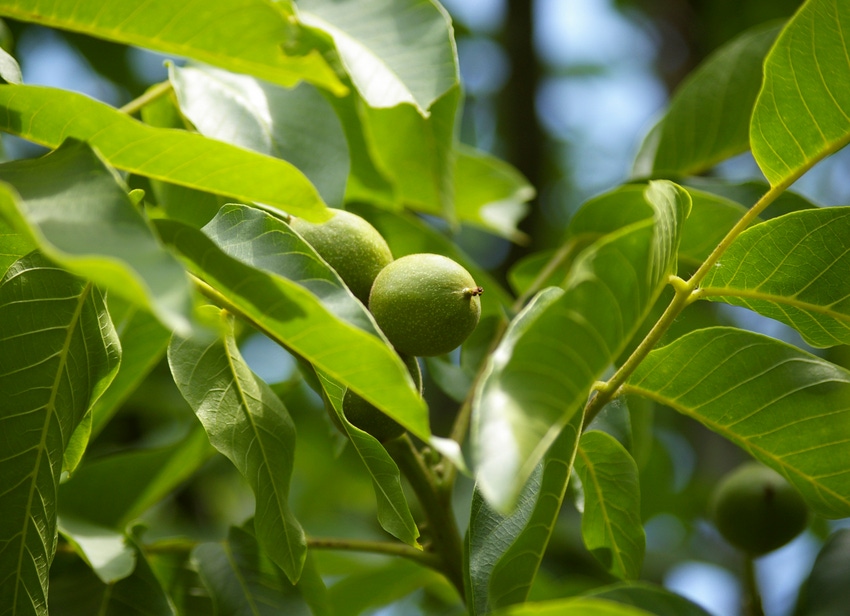
California walnut growers are invited to the dance, also known as the Produce Safety Rule (PSR) found in the 2011 Food Safety Modernization Act.
Depending on the amount of annual walnut sales, growers must comply with agricultural water requirements; beginning with sampling and establishing a water quality profile.
Melissa Partyka, ecologist at the Western Institute for Food Safety and Security at the University of California, Davis, says the Produce Safety Rule addresses on-farm efforts to ensure consumer safety in foods normally consumed raw.
Despite the hard shell, walnuts are included in the PSR since pathogens can travel to the edible part of the nut.
Under the PSR, walnut growers are required to begin sampling water which comes into contact with the harvestable portion of the crop, for example, water used to clean harvest equipment and for harvest crews to wash their hands.
Irrigation water or water in tank mixes is generally not a source of crop contamination, yet can also transport pathogens which are harmful to humans to produce that’s consumed raw.
The source of water determines the number of samples required in a grower’s Water Quality Profile (WQP). Surface water sources must be sampled five times annually for two to four years with five more every year for a rolling average of 20. Four samples over four years are required for groundwater.
Sampling should be conducted as close to harvest as practical.
Defining a source of water is also not as simple as calling it surface water and well water. The FDA considers each discrete body of water to be a ‘source.’ Canal water impounded on a farm before use is different from canal water - just as well water held in a reservoir is different from well water.
E. coli concentrations can vary throughout the year with the highest level in reservoir water during the summer months. Once groundwater is impounded in a reservoir or pond, Partyka says it’s considered surface water and must be tested as such. This is specifically addressed in the law.
She notes that water quality research suggests a dramatic increase in the amount of bacteria once well water is stored so the distinction is warranted.
The ‘clock’ for sampling initiation began January 2016 for all growers. Large growers, or those with gross sales of more than $500,000 for three years, must comply with the non-water requirements of the PSR starting January 2018.
Growers with sales in the range of $250,000 to $500,000 have a WQP deadline of January 2019. Producers with less than $250,000 gross sales over three years must comply by 2020.
Growers have an additional 2-4 years to develop their WQP from this compliance date, according to the currently published timelines. At this time, the grower’s WQP must be established and records available for inspection.
Growers who hire custom harvest operators are responsible for ensuring that the water used is “sufficient quality for its intended purpose,” says Partyka. It is up to the grower to ensure that contractors are using “good” water to clean equipment. Since these records will be inspected, growers should have the paperwork that documents water quality.
She notes that most harvest crews-contractors use on-site water to wash equipment since equipment can get dusty during transit. The grower would already be testing this water.
Growers must be aware of conditions outside their property which could compromise water quality. According to Partyka, growers are required to evaluate nearby and adjacent land uses which could contribute impact their water quality.
“The Food and Drug Administration does not expect the grower to be an expert in all potential sources of microbial contamination, but they do want growers to be vigilant and pay attention to what is going on around their properties,” the ecologist says.
The person conducting water quality sampling should be trained in basic ‘best practices.’ They should note the distance from intake to delivery, whether the water is filtered prior to reaching the delivery point, and if recent canal maintenance has occurred.
To take a sample from a spigot or hand valve, the person should open and flush for two-to-five minutes, then disinfect it, and briefly flush more water before filling the sample bottle. It’s important to not contaminate the cap.
There have been concerns about FDA’s laboratory requirements, plus the capacity for sampling, Partyka says. Most labs do not perform the testing method currently requested by FDA but she says the agency could change this requirement. Commodity groups could also step up, and with training develop in-house labs for growers.
Meanwhile, on March 20, the FDA announced its reevaluating water criteria. Partyka notes it’s unclear which details could change. The timeline for compliance could be pushed back, she says.
For more information, visit https://tinyurl.com/l8qxwxo.
About the Author(s)
You May Also Like




